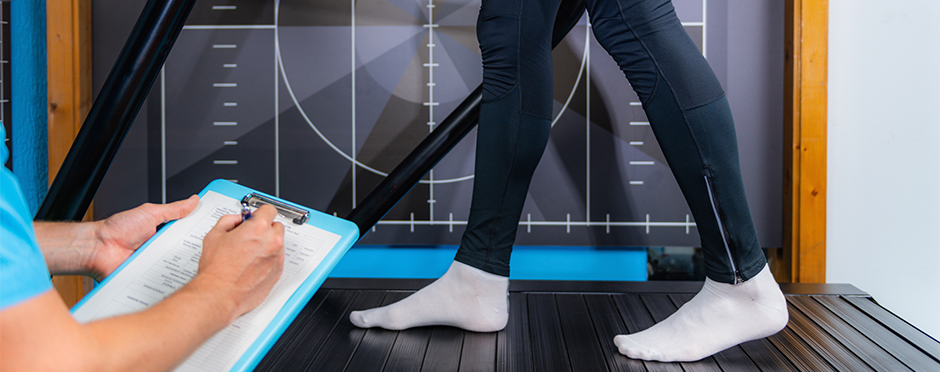
Expect The Unexpected: Tips To Get Ahead Of Slips And Falls According To A Movement Expert
Leave a CommentAre you like most people and wait to address something until you HAVE to? Do you wait until your car is running on empty before filling up the tank? Do you wait until your hunger pains are unbearable before eating? A slip is considered one of the leading causes of falls in older adults. Each year, 3 million older people are treated in emergency departments for fall injuries.
Don’t wait until a slip or fall happens to see if your body can withstand the effects! Get ahead of slips and falls with these 10 walking tests to see how your gait and balance measure up. Note: It isn’t recommended to attempt any of the below tests without the presence of another person. If you are currently walking with a cane, walker, or other assistive device, seek out assistance from your local Athletico Physical Therapist.
Test 1: Walk at a normal speed, without a cane or walker (if able). Can you make 20 feet in less than 5.5 seconds? Do you sway or deviate from walking in a straight line?
Test 2: Begin walking at a normal pace, then quickly speed up, walking as fast as you can. Now slow down and walk as slowly as you can. Were you able to transition into the different speeds without loss or balance or sway?
Test 3: Walk at a normal speed in a straight line. Every three steps, turn your head to the right and keep walking straight. After three more steps, turn your head to the left and keep walking. Continue alternating right and left every three steps until you reach 20 feet. How was your balance?
Test 4: Repeat the same test as above, but instead of looking side to side, look up and down, holding your gaze for three steps, then changing your head direction. Was that harder, easier, or the same as test number three?
Test 5: Begin walking at a normal pace, then turn as quickly as you can to face the opposite direction and come to a stop. Were you able to do that within three seconds without losing your balance?
Test 6: Put a small object, like a shoe box, on the ground in front of you. You will begin walking at a normal speed, and when you come to the shoe box, step over it, and continue walking. Were you able to complete the step over instead of stepping around it? How about a larger, taller object?
Test 7: Now keep your arms folded across your chest and walk heel to toe as if you’re on a tight rope. Can you do that for 10 consecutive steps maintaining your balance?
Test 8: Here’s a tricky one – walk at a normal speed for 20 feet with your eyes closed. Were you able to do it within seven seconds? Did you sway or lose your balance?
Test 9: Open your eyes and try walking backwards. Were you able to make it that same 20-foot distance again without losing your balance?
Test 10: Lastly, are you able to alternate your feet going up and down a flight of stairs without using a handrail?
These tests can be tougher than they seem but are a good indication of someone’s risk of falling. Difficulty performing these tests can help you recognize if you’re deviating from “normal” walking ability. Be proactive this season and seek out the help of a movement expert if you feel that you’re at risk of a fall or noticed difficulty with balance while performing any of the tests above. We are here to help you stay safe and avoid any potential slips or falls!
*Per federal guidelines, beneficiaries of plans such as Medicare, Medicaid, Tricare, VHA and other federally funded plans are not eligible for free assessments.
The Athletico blog is an educational resource written by Athletico employees. Athletico bloggers are licensed professionals who abide by the code of ethics outlined by their respective professional associations. The content published in blog posts represents the opinion of the individual author based on their expertise and experience. The content provided in this blog is for informational purposes only, does not constitute medical advice and should not be relied on for making personal health decisions.
References:
1. Wrisley DM, Marchetti GF, Kuharsky DK, Whitney SL. Reliability, Internal Consistency and Validity of Data Obtained with the Functional Gait Assessment. Physical Therapy. 2004; 84(10): 906-918.
2. Wang S, Miranda F, Wang Y, Rasheed R, Bhatt T. Near-Fall Detection in Unexpected Slips during Over-Ground Locomotion with Body-Worn Sensors among Older Adults. Sensors (Basel). 2022 Apr 27;22(9):3334. doi: 10.3390/s22093334. PMID: 35591025; PMCID: PMC9102890.
3. Centers for Disease Control and Prevention, National Center for Injury Prevention and Control. Web–based Injury Statistics Query and Reporting System (WISQARS) [online]. Accessed August 5, 2016.
